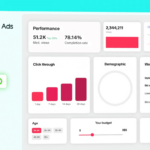Google has unveiled Ink API, an alpha version of its Jetpack library designed to simplify the creation, rendering, and manipulation of dynamic ink strokes. The company says the new library reduces the complexity of designing intuitive inking features, opening up new possibilities for creativity and productivity on Android devices.
Previously, developers had to overcome significant technical challenges to achieve fluid, paper-like inking experiences. Latency was a major hurdle, but Android has made strides in reducing it to as low as 4ms, offering nearly imperceptible delay during input. However, latency alone isn’t enough—creating visually appealing, responsive strokes while managing complex geometric queries for features like selection or erasure requires a significant investment in graphics and geometry. Ink API changes this.
The new Ink API empowers developers to easily create, render, and manipulate ink strokes, allowing them to focus on building innovative features instead of the intricacies of geometry. This modular library offers flexible components like strokes, geometry, brushes, and rendering tools, enabling developers to tailor the inking experience to their app’s specific needs. From real-time input to stunning visual results, Ink API enhances stylus interactions across various devices, from phones to Chromebooks.

Google says Ink API is designed to simplify the inking process by providing out-of-the-box solutions for common challenges, ensuring that developers can focus on crafting unique user experiences. Its modular structure offers unmatched flexibility, enabling developers to pick and choose the features they need, making it easier to integrate with existing app architectures. Whether you’re building a simple note-taking app or a sophisticated drawing tool, Ink API handles the complexities of graphics, geometry, and rendering for you.
Moreover, Ink API has been embraced across a wide range of Google apps, including Docs, Drive, Meet, and Classroom, showcasing its ability to create smooth, visually appealing inking experiences. One standout example is the Circle-to-Search feature, which leverages the live authoring and brush modules of Ink API to deliver a responsive and precise stroke as users draw circles to search. Google engineers have praised the API’s documentation and flexibility, allowing them to build working prototypes in record time.







Comments
Loading…